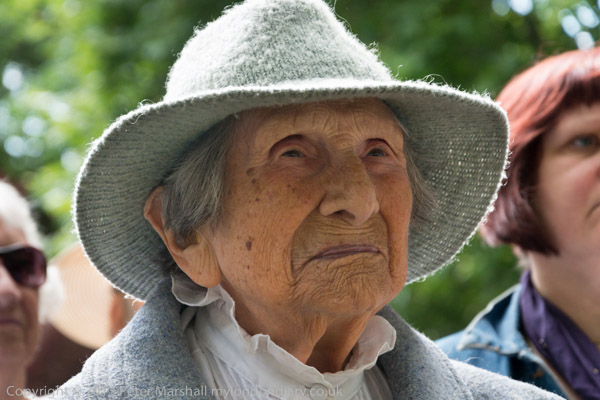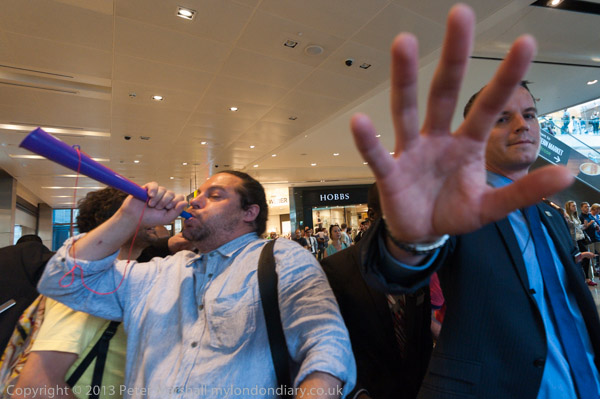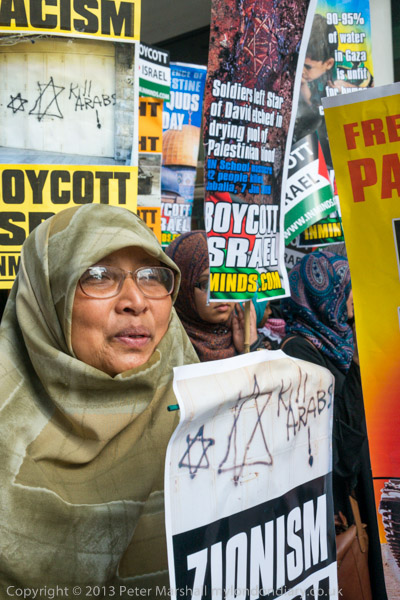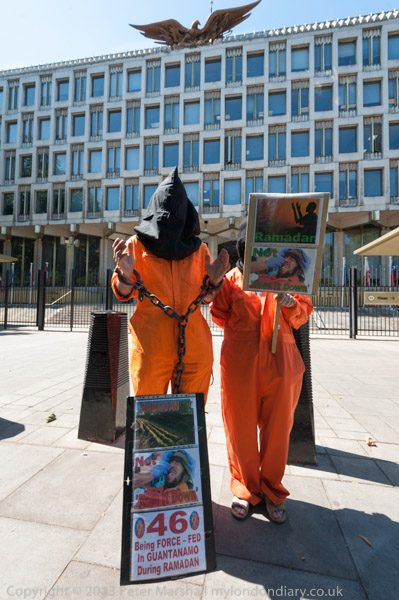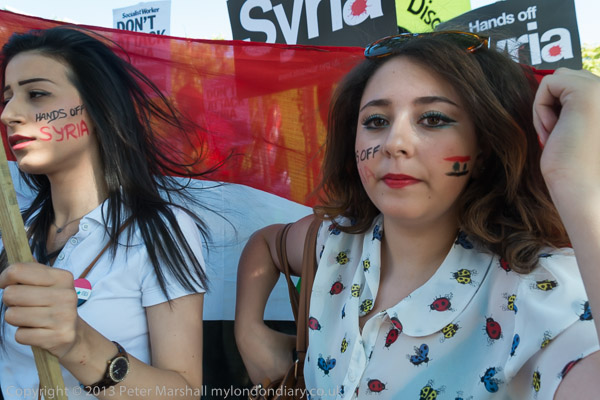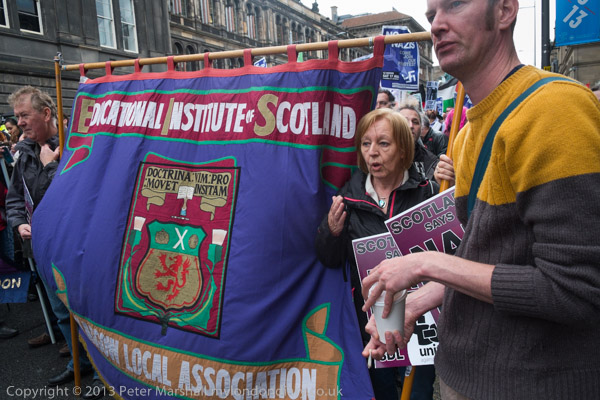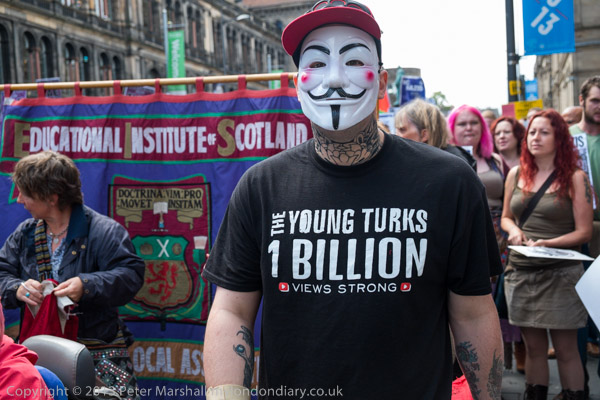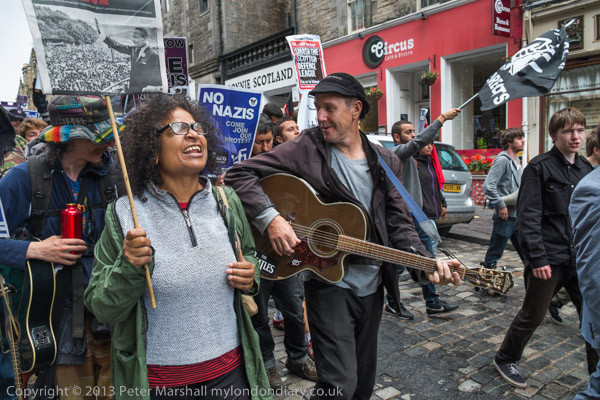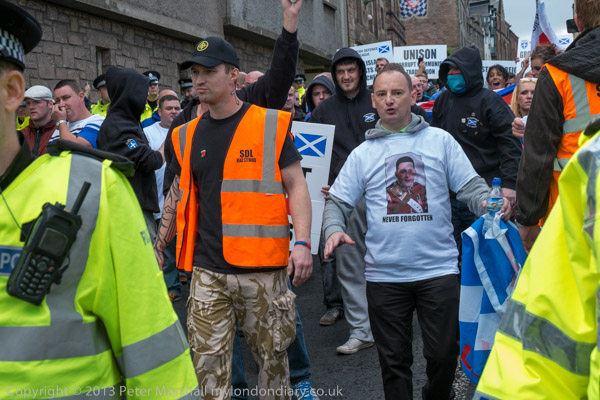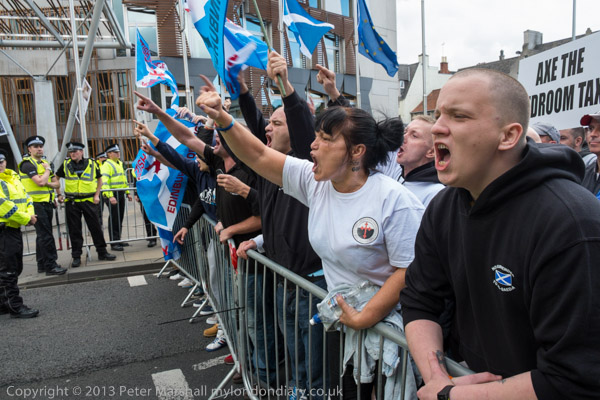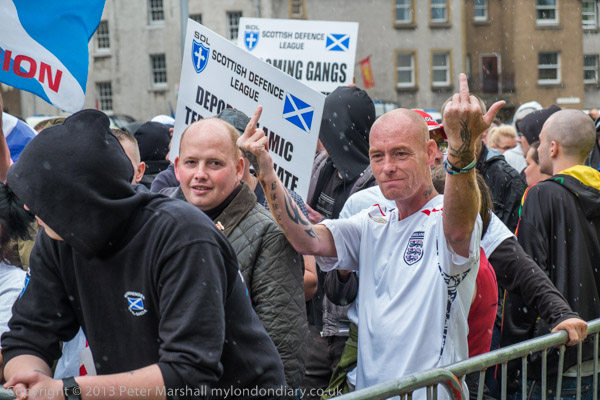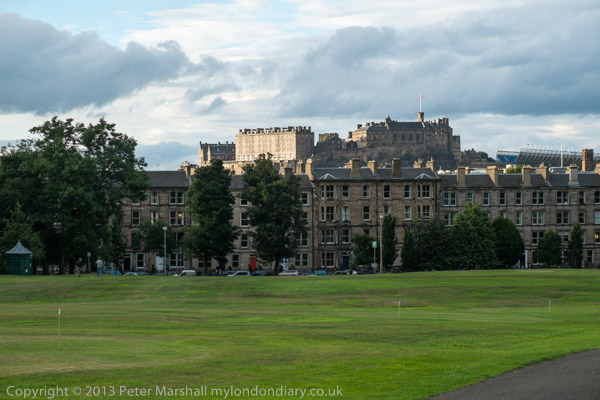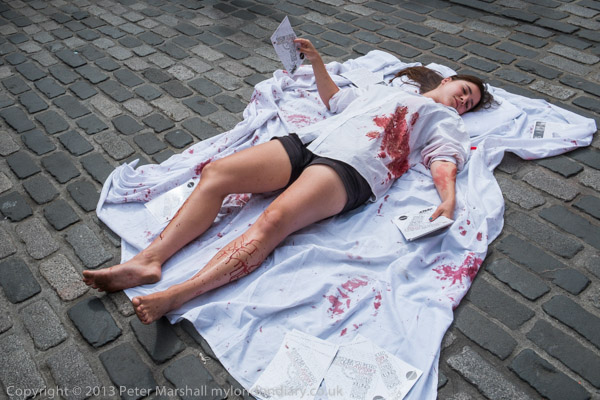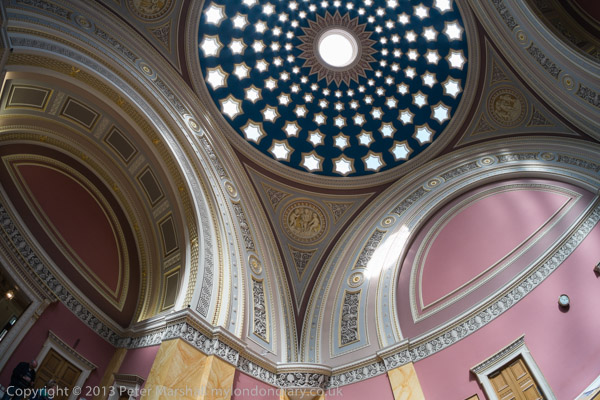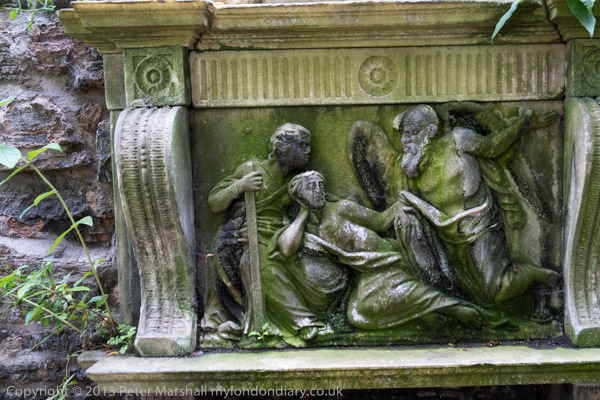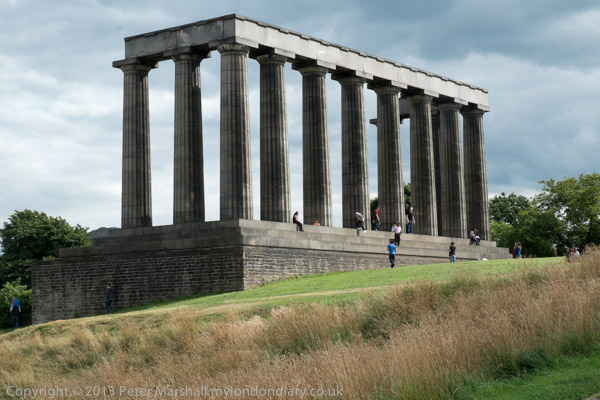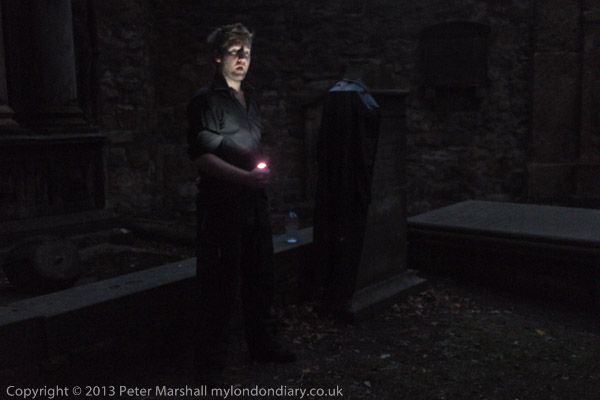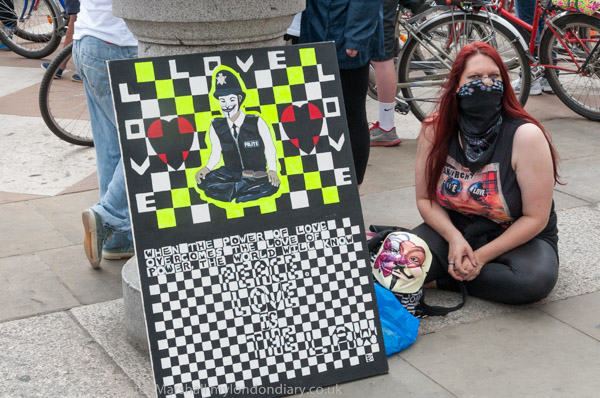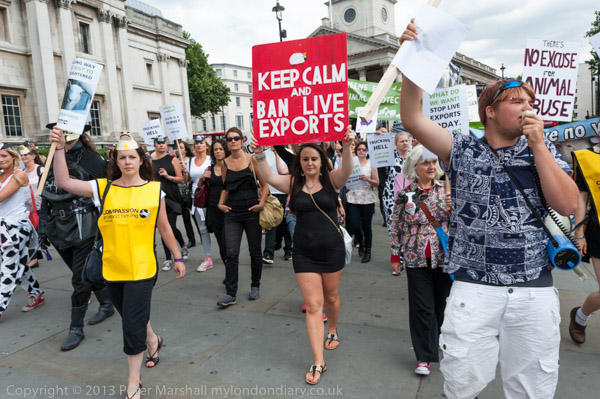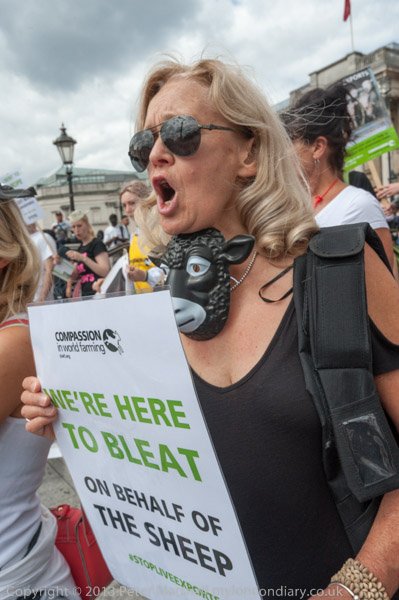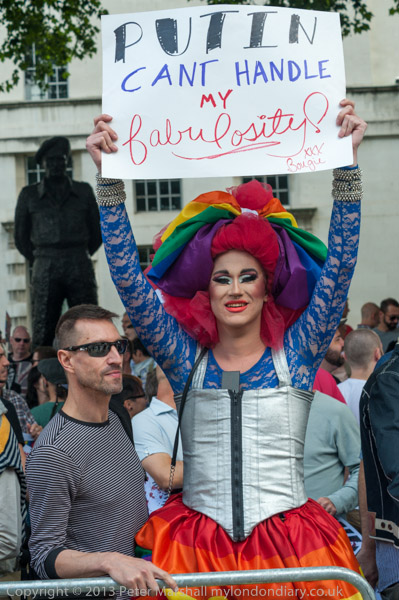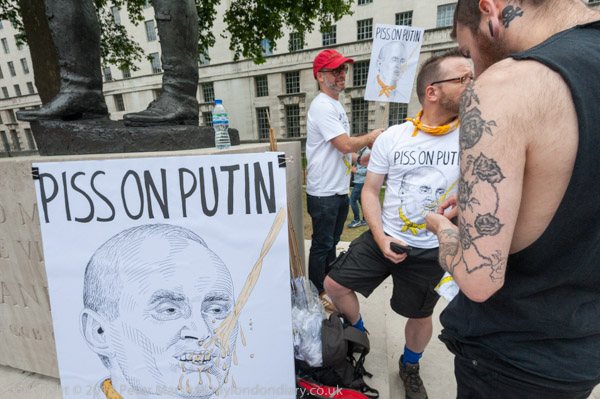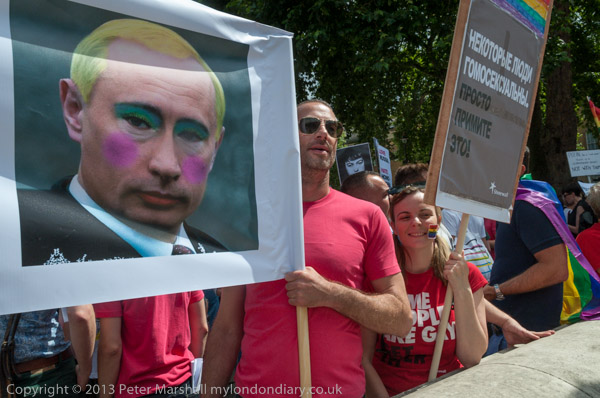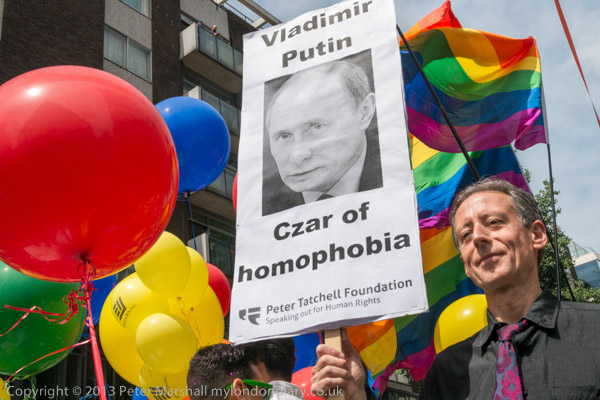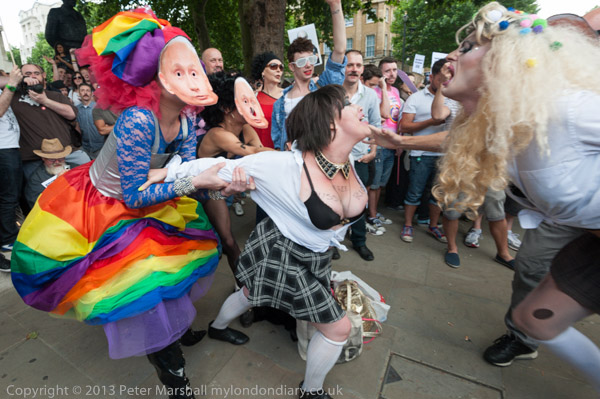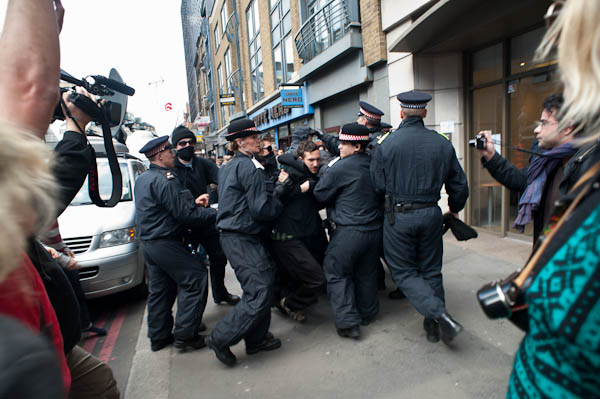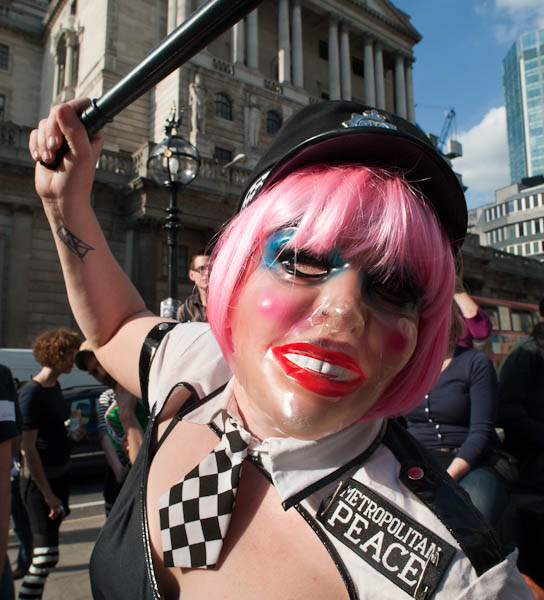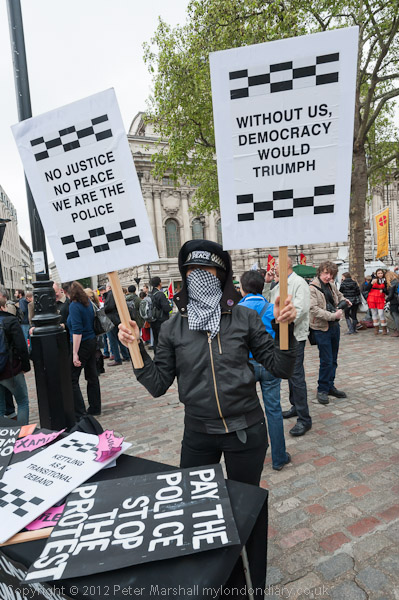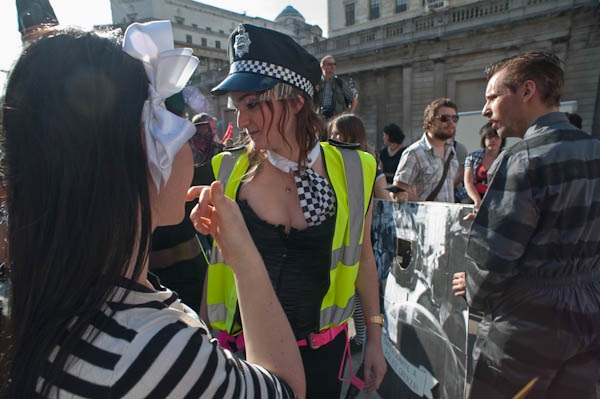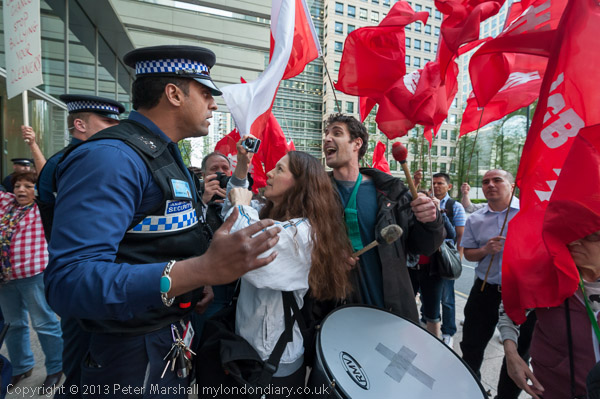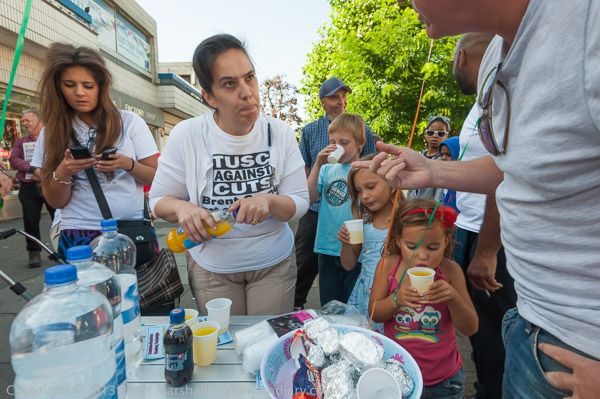
Isabel Counihan Sanchez pours out squash on the first ‘birthday’ of their campaign
There are just so many political campaigns in London that it’s often difficult for me to decide which to go and photograph. Although I support most of the campaigns that I photograph, there are some causes that are closer to my heart than others for various reasons, and that I’ll always try to photograph if I possibly can.
There is also sometimes a matter of news value, a rather subjective term, and one that I usually interpret rather differently from the commercial media, not least because I have a healthy disrespect for the kind of celebrity nonsense that sometimes seems to monopolise their pages. Sometimes I think it’s important to cover events particularly because I know that they are unlikely to. And personal factors come into it too, I am more likely to photograph events organised by people I know and warm too, though I do photograph some by people I actively dislike.
But it is also a matter of logistics and timing as well as priorities. Next Saturday I know of two protests which both start at noon in different parts of London, and I can’t easily photograph both. Had one started an hour earlier I might have tried, leaving one after around 40 minutes to jump on the tube to get to the second, but it depends on the protest whether I would want to leave after only 40 minutes, or risk missing the start of the other.
On the last day in August, there was a march and rally against military intervention in Syria that I wanted to attend, which met at noon at Temple station, and also a celebration of the first birthday of the Counihan Family Campaign starting at 3pm in Kilburn. I expected the Syria march to actually start at 1pm, so and had to work out how to cover that, and at least some of the rally afterwards in Trafalgar Square before getting to Kilburn for 3pm.
Normally in London I travel by bus – you get a better view than on the Underground and I get free bus travel, but that would be too slow for this, taking around an hour, perhaps longer as the protest and any others would disrupt bus services.
The fastest way to get across London is almost always on a bike, but unfortunately that is seldom practical when photographing protests. I would have to lock it at Temple, then go back to collect it, and the chances of finding it still there would be on the low side, as folding bikes like mine are highly prized by the thieves. Boris bikes don’t get out as far as Kilburn, and are in any case heavy and a slowish ride.
So it was the Underground, and while there are always some lines closed for maintenance at the weekend, my luck was in and on that day the Bakerloo line was working normally, taking me direct from Charing Cross to Kilburn Park station, a few minutes walk from Kilburn Square, perhaps a 25 minute journey.
There were two other protests in my diary for the day, but one clashed with the Syria march and I ruled out. The other was later in the day, but looking at who had called the protest I decided that it was quite likely not to happen, or if it did, not likely to be of great interest. There was also the fact it would mean staying in London after I was tired and wanting to be home and editing pictures and writing up the two stories from earlier – and also it would be nice to get home for some dinner!
Usually before I go out to take pictures, I’ve planned the activities for the day, looked up the travel possibilities on the Transport for London web site and made a note to remind me what I’m doing. If possible I’ll also have done some web research on the protests and started to write the articles, with possible headlines, summaries, keywords and some other information. Often I’ll write some more after the event on the train home in a paper notebook that I use at events to write down names and other key information.
It was a pleasant event at Kilburn, partly because the Counihans had something to celebrate, but also because of the solidarity shown by everyone present, many of whom I knew from there and other protests. But their story is I think an important one, and one that should encourage and inspire others to fight for justice.
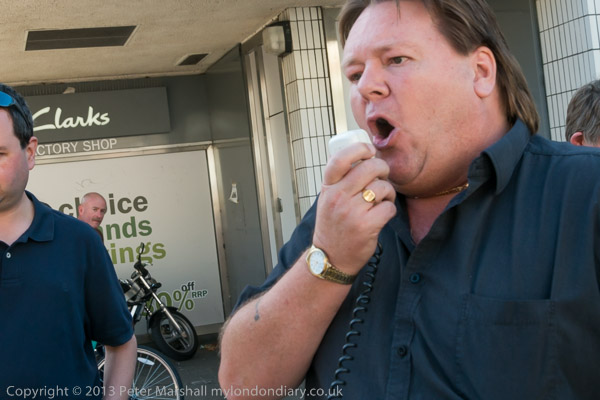
Ian Hodson
Another good reason for going was that one of the speakers was Ian Hodson, President of the BFAWU, one of the oldest trade unions around, the Bakers, Food and Allied Workers Union, which has taken a stand against zero hours contracts, bringing Hovis bakery workers in Wigan out on a series of strikes. It’s an issue that have come into the news recently, and for good reason, with these contracts being used increasingly to deny workers proper conditions of employment.
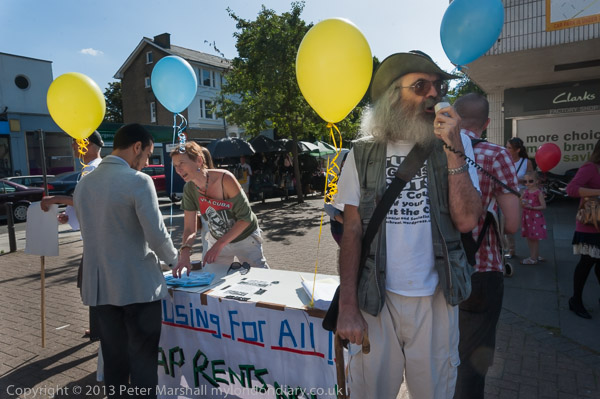
Photographically the only problems were high contrast lighting and messy backgrounds. Most but not quite all of the protest was in the shade – always good, as people screw up their eyes in the sun – but this meant that in pictures like that above, parts of the image were very bright. Areas like the table cloth would only too easily burn out, and the exposure needed to be set carefully to avoid this, leaving faces rather dark. In Lightroom I had to burn down the light areas and add a little brightness and contrast into the shadows.
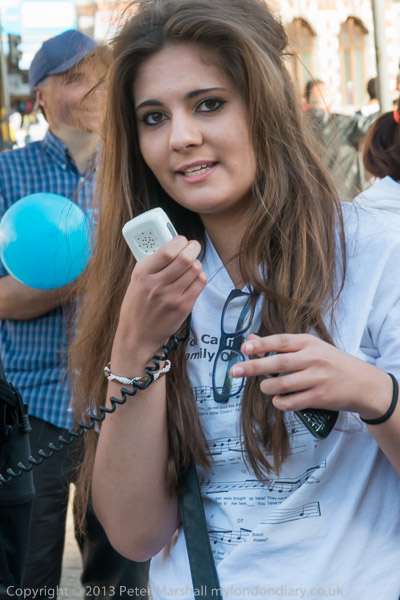
In this picture of Sarah Counihan speaking (and wearing the ‘You Can’t Keep the Counihans out of Brent’ song t-shirt) the background was just too bright, and although I’ve brought it down a lot, you can see there are some empty white (or near-white) areas. I’ve also slightly darkened her father at left, and the balloon he is holding, while adding contrast and lightening her face.
I could have used flash to get a better balance, but had decided against using it earlier as I think it would have altered the feeling of this relatively small event. But although overall I think it was the correct decision, I think I could have used a little fill on this and some of the other portraits.
More about the Counihans and their struggle for housing against Brent Council in Counihans Celebrate Anniversary.
Continue reading Counihans Fight for Housing for All
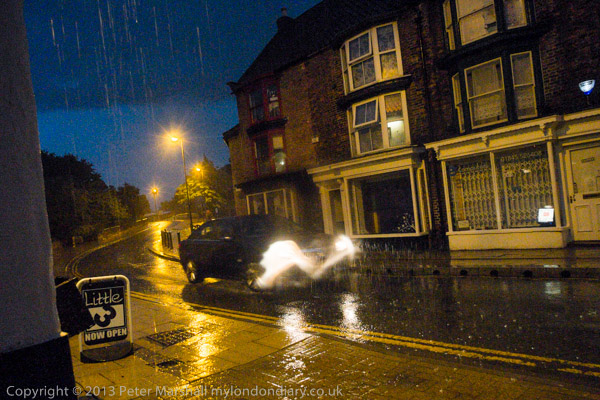
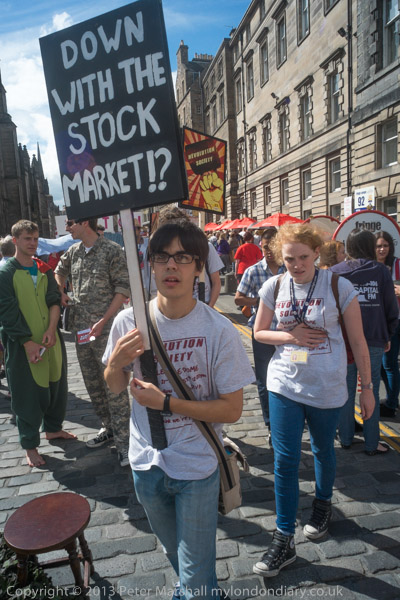
![]() Sunday
Sunday![]() Monday
Monday![]() Tuesday
Tuesday![]() Wednesday
Wednesday![]() Thursday
Thursday![]() Friday
Friday![]() Saturday
Saturday